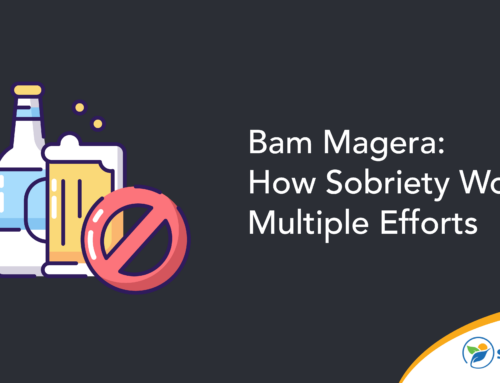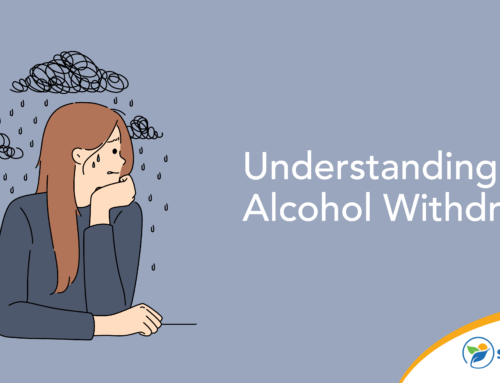More than half of U.S. adults report drinking on a monthly basis, which makes reactions to alcohol consumption a major issue. Binge drinking is particularly common and can result in many unfortunate consequences. Some people who consume alcohol become drunk very quickly, while others can drink for hours without showing significant effects. This difference in the way people process alcohol can sometimes be attributed to alcohol intolerance or alcohol sensitivity.
Alcohol Intolerance and Alcohol Sensitivity Defined
Alcohol intolerance refers to a genetic, metabolic disorder of the digestive system. People with the disorder digest alcohol differently, leading to a variety of physical alcohol-induced symptoms. Asian flush syndrome is one such problem that can occur when people with an alcohol intolerance consume alcohol. People without an intolerance can drink a lot more without becoming intoxicated or experiencing other physical symptoms.
Alcohol sensitivity is another name for alcohol intolerance, but the condition is often mistaken for an allergy, which is why it’s important for people to know the difference. People with alcohol sensitivity may feel drunk after a single drink, get nauseated almost immediately while drinking or feel unpleasantly warm and flushed.
Alcohol intolerance causes symptoms such as:
- Skin flushing
- Stuffy nose
- Itchiness
- Hot and feverish sensations
Those with alcohol sensitivity are also often prone to more extreme hangover symptoms. It’s not uncommon for some of these symptoms to be mistaken for an allergy, according to the Genetic and Rare Diseases Information Center. However, there’s a big difference in having acute alcohol sensitivity vs. an allergy.
Alcohol Allergy
An allergy to alcohol comes with the same symptoms expected from any severe food allergy, including:
- Hives
- Stomach cramping
- Difficult breathing
- Anaphylaxis
Even a swallow of an alcoholic beverage can be enough to trigger a reaction when you have an allergy, but an alcohol allergy is very rare. More commonly, people are allergic to something in the beverage. If you’re allergic to peanuts, for example, avoiding peanut butter whiskey and other peanut-flavored alcohol is a wise choice.
Tolerance Compared to Intolerance
An alcohol sensitivity doesn’t directly relate to the social perception of alcohol tolerance. It’s possible for someone with a high alcohol tolerance to also have a medical intolerance, though it’s uncommon. After all, if drinking makes you feel uncomfortable, you’re more likely to avoid it, keeping your tolerance lower. In general, drinking more and more regularly will change the way you metabolize alcohol, but those with an intolerance may find drinking unpleasant enough to avoid the activity entirely.
Can You Build a Tolerance to Alcohol?
Yes. Everyone can build an increased tolerance to alcohol, but not always at the same rate. There’s a genetic component to alcohol tolerance that impacts the risk factors for developing alcoholism. It’s also important to note that there are several types of tolerance.
Metabolic tolerance, the rate at which the liver produces the enzymes needed to break down alcohol, is one of the genetic factors in alcohol sensitivity, and it can take some drinkers a very long time to develop this type of tolerance. Those whose bodies don’t produce the enzyme needed to detoxify alcohol — people with alcohol intolerance — may struggle to develop a tolerance because their alcohol metabolism rate is dealing with other factors.
Functional tolerance is the most commonly referenced; it’s what’s invoked in sayings about “holding your liquor” or “drinking someone under the table.” These phrases imply functional tolerance, the ability to function while intoxicated. Those with high functional tolerance may drink more than their peers, which can lead to an alcoholic lifestyle that may disguise the problem for many years.
The Affect of Race and Culture on Sensitivity to Alcohol
Alcohol intolerance is genetic, which means there are racial groups that may be more prone to exhibit it. However, there are also widespread stereotypes that may not have any basis in fact. Let’s explore some facts and myths surrounding alcohol consumption and race.
Asian Flush Syndrome Is Alcohol Intolerance
East Asian people are the most likely to exhibit alcohol intolerance. Due to a sequencing issue in the DNA, people with alcohol intolerance don’t produce enough aldehyde dehydrogenase to convert the toxic aftereffects of drinking into harmless vinegar.
During digestion, the liver turns the ethanol in alcohol into acetaldehyde. The ALDH protein then converts acetaldehyde into vinegar. Acetaldehyde toxicity, a result of excessive drinking with alcohol intolerance, can lead to extreme hangover symptoms and even cause long-term damage to the brain and memory centers, along with membrane damage and stomach problems.
Alcoholism Stereotypes
The idea that alcoholism runs rampant among Native Americans is a result of mistaking causation for correlation. Most studies on the genetic components of alcoholism and alcohol intolerance focus on Europeans, making it unclear whether Native Americans have any increased predisposition for sensitivity.
It’s important to note that one of the biggest risk factors for alcoholism is poverty and mental illness, both of which are overrepresented in specific minority groups. These groups also often struggle to receive comparable medical care, which may contribute to higher rates of alcoholism. Nevertheless, there’s no evidence that these groups have high rates of alcohol intolerance.
How Culture Interacts With Drinking
Culture often plays a much more significant role in alcohol abuse than race. Households have widely different attitudes toward alcohol consumption, and social groups also have a broad range: Fraternities often hold parties where drinking contests are the norm, and some students avoid spending time with those who abstain. Even those with alcohol intolerance and a resulting aversion to drinking may find themselves somewhat ostracized by their peers.
Some religious groups respond in the opposite way, completely abstaining from alcohol and referring to drinking as a sin. In either case, the culture that surrounds you can play a major role in determining your attitudes toward drinking.
Reducing Your Risks and Avoiding Alcohol Sensitivity Symptoms
The best way to reduce the risk of a reaction due to alcohol intolerance is abstinence. An elimination diet for alcohol intolerance works, as long as you avoid drinking. When looking for help with how to manage alcohol sensitivity, minimizing your exposure is essential. If you don’t drink, you won’t experience flushing, nausea, itchiness and other symptoms related to this condition.
At Sunlight Recovery, our rehab center is available to help if you struggle with alcohol abuse or another substance use disorder. Contact us today to get in touch with our compassionate and experienced mental health professionals to help you get on the path to lifelong sobriety.







